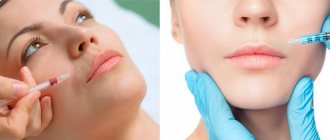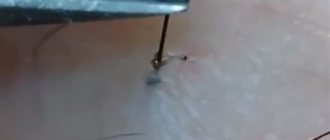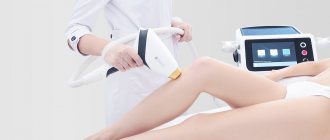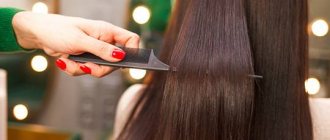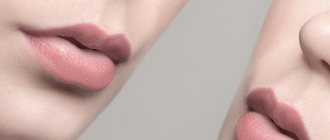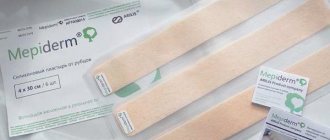Those who have done waxing know that a very common consequence after it is skin irritation in the form of rashes, pustules or redness. Most often, irritation appears after depilation on the face and bikini area . The main causes of skin irritation are skin inflammation due to an inept procedure, overly sensitive skin, allergies to wax or wax components (additives). If epilation on the face is carried out according to the rules, then skin problems usually do not arise.
Let's find out how to relieve irritation after hair removal .
Skin care after waxing
Removing unwanted hair is done with the aim of having smooth and beautiful skin. Achieving a well-groomed appearance is quite simple - you should properly carry out the preparation, the procedure itself and care after the session. Neglect will lead to irritation and deterioration of the overall condition of the skin. Delicate areas are especially affected. After waxing, he should receive the necessary care to reduce side effects and prepare for new sessions. The first step is to carefully remove any remaining working material. This can be done with a damp disinfectant wipe. After 2-3 hours, you should take a warm shower without using cosmetics or hard washcloths.
How to soothe the skin, what to treat it with
After the session, irritation may occur. This is a completely natural reaction in 90% of women with thin, fair and sensitive skin. The reaction to mechanical stress disappears within 2-3 hours. In order not to wait for irritation to appear and not to aggravate the situation, the skin should be restored immediately. To do this, it is worth treating it with hydrogen peroxide. The product should not be rubbed in, but only applied with light movements. Experts do not recommend touching the skin after waxing. Therefore, it is better to choose a spray product without alcohol. You can use a small spray bottle. Add a small amount of warm water and a few drops of tea tree and/or chamomile essential oil. Some recommend using olive or refined sunflower oil. They lubricate the treated area. In addition, do not forget about pharmaceutical antiseptics:
- Miramistin;
- Chlorhexidine;
- talc or baby powder.
To prevent irritation, you should decide in advance what to use after waxing and purchase this product.
Folk remedies
To relieve reactions in the form of irritation, folk remedies are used. Essential oils, along with extracts of medicinal herbs and plants, easily cope with this problem. In addition, they help care for the skin. Immediately after the procedure, you can apply a soothing mask to the area to be depilated. Step-by-step recipe for its preparation:
- 10 ml (about 2 tsp) avocado oil mixed with 1 tsp. blue cosmetic clay.
- Add 1 tsp. cocoa and 1 tsp. olive oil.
- Mix until smooth and apply for 20-25 minutes.
It is also effective to use herbal decoctions and juice of medicinal plants. Chamomile, sage, mint and oak bark are considered powerful anti-inflammatory agents. Their decoctions can be used separately from each other, or they can be combined. By adding 3-5 drops of any essential oil to the product, you get a lotion after waxing. It should be used 3-4 times a day. It is worth separately noting the beneficial properties of Kalanchoe and aloe leaves. They moisturize well and neutralize the symptoms of irritation. They are applied as a mask and left for 40 minutes. The juice of these plants can be wiped over the treated area 4-5 times a day.
Medical
For severe irritation, medications should be used. They quickly relieve inflammation, prevent infection of the injured area, improve metabolism in tissue cells and blood supply. The following remedies are recommended:
- for rapid regeneration of damaged skin, relieving dryness - Panthenol, Pantestin, Bepanten;
- to speed up metabolism - antihypoxic agent Actovegin;
- to relieve inflammation and prevent infections - zinc ointment;
- against purulent inflammation of the follicle - Miramistin, Dalatsin, Erythromycin;
- for quick relief of inflammation irritations - salicylic acid, Chlorhexidine;
- to prevent the appearance of ulcers at the site of ingrown hairs - Tretinoin.
All these drugs cannot be prescribed to yourself. This should be done by a specialist.
Cosmetic
Cosmetics can relieve irritation after depilation, slow down hair growth and prevent the problem of ingrown hairs. In addition, they effectively care for the skin and improve its overall condition. You can use gels, creams, lotions that are specially produced for post-depilation care. Cosmetics include:
- lotions of the brands Arabia, Depilflex, Gloria;
- Floresan cream, Follivit cream-gel, coconut oil;
- Librederm scrubs, Lemon-sugar sorbet.
The cost of coconut oil starts from 100 rubles
Hair growth inhibitors
Cosmetics containing ant oil will help slow down hair growth. They improve the condition, relieve irritation and redness. Regular use of them prevents ingrowth. List of recommended products to slow down hair growth:
- post-depilation cream and lotion from Velvet;
- cream for flaking, redness and itching, prolonging smoothness for 10-14 days Floresan;
- Depil Mousse Depileve mousse, which has an anti-inflammatory effect.
Anti-ingrowing
Ingrown hairs cause irritation, inflammation and spoil the appearance. The problem can arise when depilating by any method after a salon procedure or a session at home. If you ignore the problem, it can lead to purulent inflammatory processes. The choice of product depends on the condition of the skin and the degree of ingrowth. You can remove it manually or with chemical peeling. Experts call Follivit cream the best option for ingrown hairs. It not only relieves irritation and its symptoms, slows down growth, but also prevents hair cutting. Popular solutions to the problem:
- Ingrow go Skin Doktors - lotion relieves signs of inflammation and irritation, fights ingrown problems.
- Let`s Epil Gloria – spray lotion prevents ingrown hairs, softens and moisturizes.
- Hair Puller Depilflax. A product based on salicylic acid has a gentle effect on epithelial cells. Reduces the risk of ingrowth, relieves inflammation, evens out the structure.
Price – about 350 rubles
Scrubbing
Ingrown hairs after waxing can be prevented by scrubbing. Before waxing, you should use the scrub 1-2 days before. This will help remove the keratinized layer of epithelium, lift hairs, open and clean pores. After the wax procedure, taking a hot bath, shower or visiting a sauna is not recommended. This can be done only after 2-3 days. The same goes for scrubbing. Immediately after waxing, you can injure the skin with this product, since the top layer has already been subjected to mechanical stress. Recommended body scrubs after hair removal:
- “Brazilian coffee” from Organic Shop based on organic oil. The product cleanses and moisturizes.
- “Lemon-sugar sorbet” from Compliment with citrus aroma. The product perfectly exfoliates and moisturizes.
You can use a scrub you prepare yourself. Grind oatmeal and combine with natural ground coffee. Dilute with shower gel until smooth. Use 3-4 times a week.
How to quickly calm your skin?
Pharmaceutical antiseptic products and moisturizing creams will help get rid of redness on the skin caused by hair removal:
- any baby cream;
- "Boro Plus";
- "Miramistin";
- "Bepanten";
- "Panthenol";
- "Chlorhexidine";
- Alcohol-free soothing facial lotion;
- thermal water;
- any ointment or cream against burns.
If the irritation does not go away for a long time or you are a supporter of traditional medicine, the following will help:
- Aloe Vera Leaf Juice: Cut the leaf of the medicinal plant lengthwise and place it on the “wound”.
- A decoction of medicinal plants: chamomile, celandine, calendula. It is necessary to brew the herb and let it brew for a couple of hours, after which the affected areas should be wiped.
- A mixture of any base vegetable oil (olive, vegetable, coconut) and tea tree, chamomile, lavender extract.
- Baby powder.
What not to do
Before and after waxing, you should follow simple care rules. This will enhance the effectiveness of the procedure, slow down the growth of new hair and prevent the risk of possible side effects. After the end of the session, for the first 2-3 days, it is recommended to treat with Chlorgesidine. Cosmetologists recommend that after waxing you avoid sunbathing, visiting a solarium, sauna, bathhouse, or swimming pool.
Is it possible to sunbathe
To prevent injury during waxing, you should not take “sunbathing” before and after the procedure for a week. Tanning can cause irritation, which can lead to pigmentation. Recovery usually takes 5-8 days. However, even after this period, you should use sunscreen SPF 30, since ultraviolet rays have an aggressive effect on sensitive areas treated with wax. This must be done within 1.5-2 months. The best cream, according to experts, is one containing zinc oxide and titanium dioxide.
To take a bath
It is possible and necessary to arrange water procedures after waxing. It is better to use a warm shower so that the water drains from the body. The bath can be used after 2 days, but not hot and without cosmetics. Failure to comply with hygiene rules may lead to the development of pathogenic bacteria that cause infections. You should not use washcloths for washing for about a week. Rubbing, even lightly, can cause ingrown hairs in the treated areas.
Go to the sauna
Visiting a sauna after waxing, where hot temperatures are used, can negatively affect the skin. After mechanical impact, it becomes more sensitive to high temperatures. This leads to burns. You should avoid the sauna for 15-20 days.
Visit the pool
After hair removal with wax, the skin becomes sensitive, especially if the procedure was performed on the face or bikini area. Therefore, interaction with salty or chlorinated water leads to irritation. Additionally, tight swimsuits and swimming suits increase the risk of ingrown skin.
How to avoid?
It is unlikely that it will be possible to completely prevent the appearance of irritation on the face. But simple recommendations will help make its severity minimal and speed up the skin restoration process. The first step is to properly prepare for hair removal:
- It is best to carry out this procedure in the evening. During the period of sleep, the skin will have the opportunity to recover and fully calm down.
- Immediately before the procedure, you should properly prepare the skin. It is advisable to take a warm shower or even a bath, this will steam the epidermis and make it easier to part with unwanted hairs. Afterwards, you can scrub the skin a little in the areas where the removal will be carried out. Finally, you need to pat your face dry with a soft towel, but do not rub it.
- Immediately before epilation, it is important to treat the epidermis with any suitable antiseptic. Budget-friendly and effective Chlorhexidine can be a good find.
If severe irritation regularly occurs after hair removal, you should consult a cosmetologist. Perhaps a specialist will point out any mistakes or advise you to change the method of getting rid of unwanted vegetation to another.
From wax
Severe irritation after waxing is most often the result of the procedure not being carried out correctly. Basic recommendations for competently getting rid of unwanted hair:
- It is necessary to conduct an allergy test in advance if this wax composition has not been used before.
- A couple of days before the procedure, it is advisable to begin to moisturize and nourish the skin more.
- Wax should be applied only to dry and fat-free epidermis. It is possible to use baby powder to pre-treat the skin.
- Waxing should be done in the direction of hair growth, and removal should be in the opposite direction. If hairs grow differently on the treated area, you need to get rid of them little by little.
- Do not use wax on areas with pimples, abrasions, scratches or symptoms of any skin diseases.
From an epilator
You can also avoid severe irritation when using an epilator by following a number of simple recommendations:
Possible consequences
Depilation with a wax mixture has its advantages and disadvantages. Negative consequences can be minimized if properly cared for. If the procedure is performed incorrectly, there is the possibility of adverse outcomes, which include:
- getting burns, more often occurs when using a cartridge wax melter;
- the appearance of bruises;
- irritation, redness;
- inflammation;
- peeling;
- itching;
- ingrown hair.
What to do if irritation appears on your face and legs
The problem can occur within the first minutes after depilation, after 2-4 hours and even the next day. It all depends on the sensitivity and level of stress received. When choosing a product, you should pay attention to the composition. It is not recommended to use preparations containing alcohol components. Many consider the best option to be “Rescuer” ointment or a regular hydrogen peroxide solution. Minor irritation can be easily relieved with baby cream. All products released for after-waxing care have antibacterial and wound-healing effects. Deeply moisturize and prevent unwanted effects.
How to get rid of white pimples
To prevent acne from appearing, you need to treat with any antiseptic before depilation. For this you can use Miramistin. The product reduces the number of microbes. After the waxing procedure, you need to use moisturizing and softening sprays and creams. However, it is better to use natural remedies - avocado or tea tree oil. They relieve irritation and help fight acne.
Red dots and spots
This problem occurs on sensitive skin. If the session is carried out in the evening, the next morning the red dots will completely disappear. If this does not happen, the problem is solved with disinfectants and sedatives. You can lubricate with lavender or tea tree oil. Make lotions from chamomile and calendula decoctions. Aloe pulp will relieve irritation and inflammation. Suitable for fighting red dots:
- talc, baby powder or cream;
- hydrogen peroxide;
- 2 tablets of aspirin diluted in 100 ml of warm water.
Why do bruises remain?
The problem arises due to the individual characteristics of the body:
- sensitive and delicate skin;
- capillary fragility;
- blood clotting disorder;
- varicose veins and diabetes mellitus;
- slow tearing of working material;
- insufficient tension when removing wax.
If a bruise appears, apply ice cubes wrapped in cloth. In the future, you need to lubricate the area with ice from a decoction of chamomile, green tea, string or calendula.
Burn after waxing
You can get it by using hot wax at home. Therefore, it is better to carry out depilation with this type of working material in a salon with an experienced specialist. If a problem does arise, you should immediately soothe the skin with a cold compress and then apply a soothing spray or lotion. Can be treated with Panthenol.
Ingrown hairs
After removal, ingrown hairs may appear. The damaged follicle “forces” the broken shaft to curl and grow in the other direction, that is, under the skin. Before and after waxing, it is recommended to carry out cleansing and exfoliating procedures.
What to anoint if your feet itch
Itching after waxing can be caused by street dust if it is a warm period. Or tight and thick tights in cold weather. Contact of the material with the skin adds dryness and flaking. The problem is also related to sensitivity. You should use Panthenol, which heals minor scratches and relieves irritation and itching. The product is applied to the area and left for 25-30 minutes. Residues are removed with antibacterial wipes.
Why does irritation occur?
During the depilation process, the skin is exposed to varying degrees of intensity. So, when shaving, the machine also removes particles of the epidermis along with the vegetation, and when using an epilator, sugar paste or wax, even deeper layers of the skin are affected, since the hairs are pulled out along with the root. The follicles are connected to the fat ducts, which, in turn, are located in close proximity to the nerve endings. For this reason, when hair is removed, irritation occurs, and the released sebum can cause inflammation. The epidermis may react to this as follows (depending on individual characteristics):
- redness;
- the appearance of red or pinkish spots;
- itching;
- dryness, tightness and flaking.
When removing hair from the root, it affects not only the skin, but also fat ducts and nerve endings, so the epidermis often reacts with irritation
In addition to mechanical impact, there are other reasons that cause irritation:
- excessively dry and sensitive skin;
- allergic reaction to a component of a cosmetic product (depilatory cream, sugaring paste, wax, shaving gel, etc.);
- first hair removal/depilation (in young girls who are just starting to get involved in hair removal procedures, the skin, which is not accustomed to such effects, may react with irritation to the first 2-3 sessions);
- lack of preparation of the epidermis (steaming, moisturizing and removing dead particles make the procedure less traumatic);
- non-compliance with the methodology (getting rid of excess vegetation without certain skills and dexterity is fraught with irritation);
- use of low-quality cosmetic products;
- lack of proper care after the procedure (moisturized and “nourished” skin is less susceptible to problems).
Irritation is not just a cosmetic defect. As a rule, red bumps on the skin itch, causing a lot of discomfort. In advanced cases, inflammation and pustules may appear. In such a situation, it is better to consult a dermatologist.
Reddened skin after sugaring or waxing is a normal phenomenon that goes away after 2-3 hours (with sensitive epidermis it can last up to 48 hours).
Results
- Waxing will solve the problem of unwanted hair on the face and body.
- The procedure is carried out in a salon or at home.
- Using wax can lead to irritation and ingrown hairs.
- It is important to properly care for your skin before your session to reduce the risk of possible side effects.
- To relieve irritation, inflammation, itching and red spots, it is recommended to use pharmaceutical and folk remedies.
- To prolong the effect of “smooth” skin, it is recommended to follow the rules of care after hair removal. We also recommend that you familiarize yourself with face masks from Garnier in this material.
How to remove hair correctly?
Wax
It doesn’t matter where the hair is located - in the armpits, on the arms, legs or stomach. Their length should be 0.5-1 cm. Apply heated wax to the body against hair growth or along it (suitable for sensitive skin), place a paper strip on top, press it down and wait for the composition to dry - about 10-30 seconds. Tear off the strip along the hair growth. To reduce pain, press your fingers on the area to be epilated - this will significantly reduce sudden pain and allow the skin to calm down more quickly.
How to soothe the skin and remove redness?
If red dots and spots still appear on your face after hair removal, you need to deal with them in a more directed manner. A good find for this might be:
- Actovegin gel. This is a pharmaceutical drug that perfectly stimulates and accelerates the healing process. It should be applied in a thin layer to problem areas several times a day. Solcoseryl gel also has a similar composition and properties.
- Panthenol. This is a cream product based on dexpanthenol (one of the forms of vitamin B5). It is believed that this medicine, when applied to the skin, effectively moisturizes, stimulates regeneration processes and promotes the rapid disappearance of skin defects. Panthenol can be used twice or thrice a day.
- Chamomile or calendula decoction. Such herbs have good anti-inflammatory and soothing qualities. They can be brewed according to the instructions on the package and used to prepare lotions for problem areas.
- Witch hazel. This is a natural-based ointment that copes well with irritations caused by poor circulation. It should be used twice a day.
If pustules appear on the skin, it is better not to risk it and seek advice from a dermatologist. After all, such a phenomenon may indicate the addition of a secondary infection.

